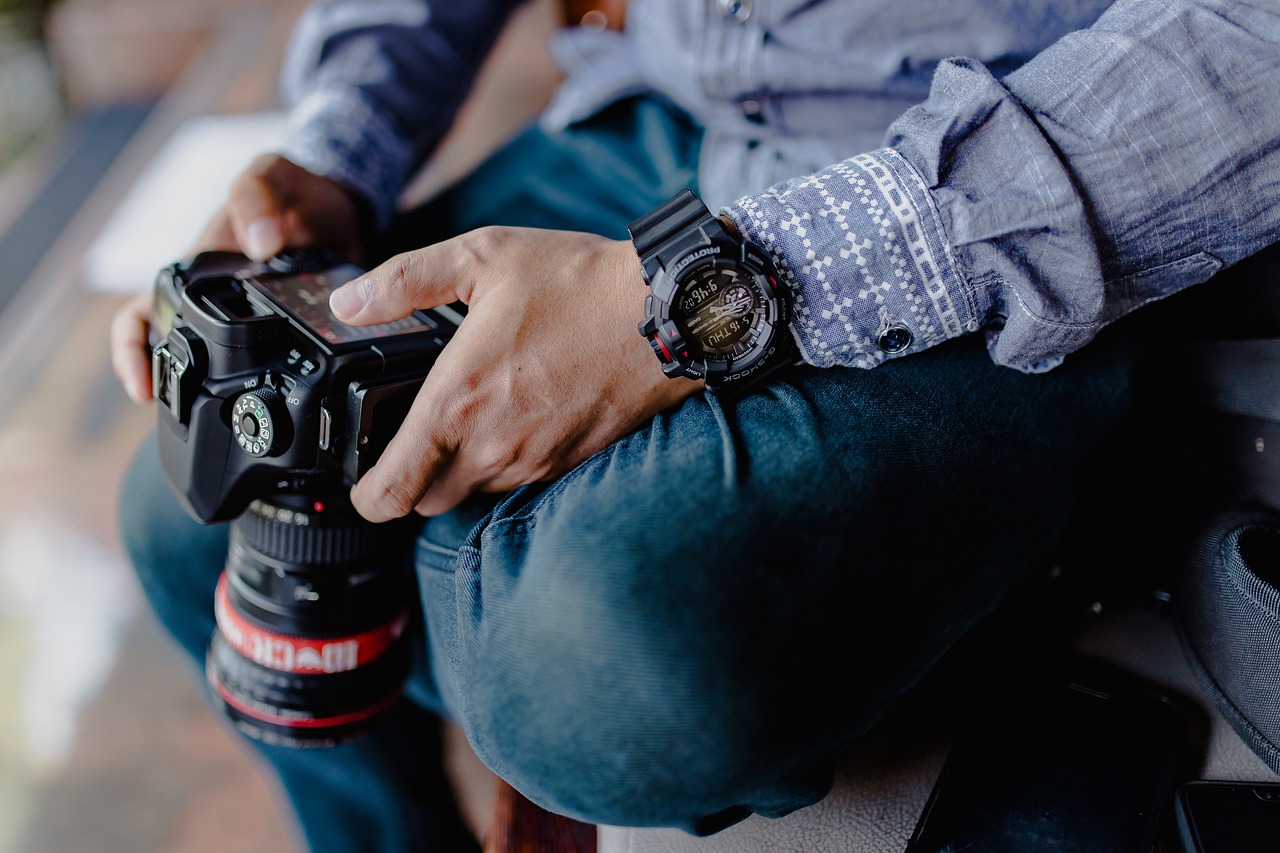This article explores the top-selling action cameras of the year, analyzing their features, performance, and market trends. Discover what makes these cameras stand out and why they are favored by consumers. As adventure enthusiasts and content creators seek to capture their experiences, action cameras have become essential tools for documenting life’s most thrilling moments.
In 2023, several action camera models have risen to the top of consumer preferences. Among them, the GoPro Hero 11 Black, DJI Osmo Action 3, and Insta360 ONE RS are leading the pack. Each of these models offers unique features:
- GoPro Hero 11 Black: Known for its superior image stabilization and 5.3K video resolution, it remains a favorite for both casual users and professionals.
- DJI Osmo Action 3: This camera boasts dual screens and excellent low-light performance, appealing to vloggers and outdoor adventurers.
- Insta360 ONE RS: With its modular design, it allows users to switch between lenses, making it highly versatile for various shooting conditions.
When comparing action cameras, performance metrics such as image quality, stabilization, and battery life are crucial. The GoPro Hero 11 excels in image quality with its advanced sensor technology, while the DJI Osmo Action 3 leads in stabilization, providing smooth footage even during intense activities. Battery life varies, with most models offering around 1.5 to 2 hours of continuous recording, depending on settings.
When purchasing an action camera, consider the following essential features:
- Resolution: Aim for at least 4K for high-quality footage.
- Frame Rate: Higher frame rates (60fps or more) are ideal for capturing fast action.
- Waterproof Capabilities: Look for cameras that can withstand underwater use without additional housing.
- Ease of Use: User-friendly interfaces and touchscreen controls enhance the shooting experience.
The action camera market is primarily dominated by a few key brands. GoPro remains the market leader due to its innovative features and strong brand loyalty. However, brands like DJI and Insta360 are rapidly gaining traction by offering competitive products that challenge GoPro’s dominance.
Understanding the price spectrum of action cameras helps consumers make informed decisions. Prices typically range from $200 to over $500. Here’s a breakdown:
- Under $300: Options like the Akaso Brave 7 LE offer decent features for budget-conscious buyers.
- Mid-range ($300 – $500): Models like the DJI Osmo Action 3 provide a balance of quality and affordability.
- Premium (Above $500): High-end options such as the GoPro Hero 11 Black justify their price with advanced technology and superior performance.
Choosing the right action camera depends on your individual needs and use cases. Consider what activities you will be filming—whether it’s extreme sports, underwater adventures, or casual family outings—and select a camera that meets those requirements.
The action camera industry is evolving rapidly. Emerging trends include 360-degree filming and AI integration, which are set to revolutionize how we capture and edit footage. These advancements will likely enhance user experience and expand creative possibilities.
Consumer reviews provide valuable insights into the performance and reliability of action cameras. Many users praise the GoPro for its durability and image quality, while others highlight the affordability and features of newer brands like DJI and Insta360. Common issues noted include battery life and the learning curve associated with advanced features.
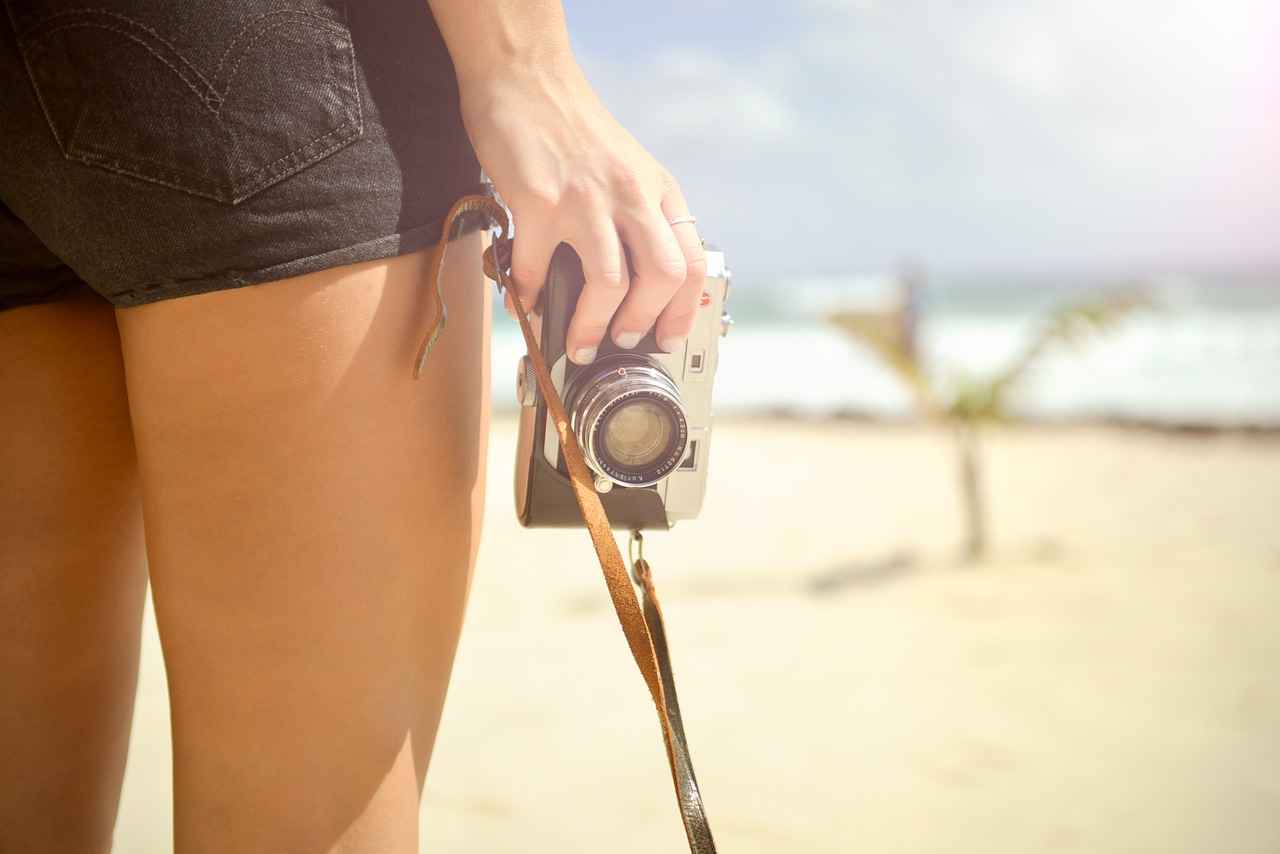
What Are the Top Action Cameras of 2023?
The action camera market has seen an incredible surge in popularity, with numerous models vying for the attention of consumers and adventurers alike. In 2023, several action cameras have emerged as leaders, each offering unique features that cater to different needs. This article delves into the top action cameras of the year, examining what makes them stand out in a crowded marketplace.
As we explore the leading action camera models of 2023, it’s essential to consider their distinct features and specifications that appeal to a wide range of users. Here’s a look at some of the most popular options:
- GoPro HERO11 Black: Renowned for its exceptional image quality, the HERO11 Black boasts a new sensor that captures stunning 5.3K video at 60fps. Its advanced stabilization technology, HyperSmooth 5.0, ensures smooth footage even in the most chaotic environments. Additionally, it is waterproof up to 33 feet without a case, making it perfect for underwater adventures.
- DJI Osmo Action 3: This camera features a dual touchscreen design, allowing users to frame shots effortlessly. With 4K HDR video capabilities and RockSteady stabilization, the Osmo Action 3 is ideal for both casual users and professionals. Its rugged build and waterproof capabilities further enhance its appeal for outdoor enthusiasts.
- Insta360 ONE RS: A unique contender, the ONE RS offers versatility with interchangeable lenses, including a 360-degree lens option. This feature allows users to capture immersive footage from multiple angles. The camera also supports 4K video recording and has excellent stabilization, making it a favorite among content creators.
- Akaso Brave 7 LE: For those on a budget, the Brave 7 LE provides impressive features at a lower price point. It offers 4K video recording, dual screens, and is waterproof up to 131 feet with the included case. Its user-friendly interface and solid performance make it an excellent choice for beginners.
- Sony FDR-X3000: Known for its superior image stabilization, the FDR-X3000 uses Balanced Optical SteadyShot technology to deliver smooth footage. It captures 4K video and has a robust build quality, making it suitable for various action-packed scenarios.
Each of these models has carved out a niche in the market, appealing to different segments of consumers. Whether you are a professional filmmaker, an adrenaline junkie, or a casual user looking to capture memories, there’s an action camera tailored to your needs.
In summary, the action cameras of 2023 are not just about capturing high-quality video; they incorporate advanced technology and user-friendly features that enhance the overall experience. As the market continues to evolve, these leading models set the standard for performance and innovation, ensuring that adventure seekers can document their journeys in stunning detail.

How Do Action Cameras Compare in Performance?
In today’s fast-paced world, action cameras have become essential tools for adventurers, vloggers, and sports enthusiasts alike. With a plethora of options available, understanding how these cameras perform in real-world scenarios is crucial for making an informed purchase. This section delves into the key performance metrics of action cameras, focusing on image quality, stabilization, and battery life to identify which models truly excel.
When evaluating action cameras, several performance metrics stand out as critical indicators of their capabilities:
- Image Quality: The clarity and sharpness of photos and videos are paramount. This is influenced by factors such as resolution, sensor size, and lens quality.
- Stabilization: Effective stabilization is essential for capturing smooth footage, especially during high-speed activities. Different technologies, such as electronic image stabilization (EIS) and optical stabilization, play significant roles.
- Battery Life: A long-lasting battery ensures that users can capture their adventures without frequent interruptions. The duration varies among models, so understanding real-world performance is vital.
Image quality is often the first aspect consumers consider when selecting an action camera. High-resolution options, such as 4K and even 8K, allow users to capture stunning visuals that can be enjoyed on large screens. Additionally, larger sensor sizes typically enhance low-light performance, enabling better shots in challenging lighting conditions. Cameras that excel in this area often feature advanced lens coatings and larger apertures, providing vibrant colors and sharp details.
Stabilization technology is vital for action cameras, as it significantly impacts video quality. Without proper stabilization, footage can appear shaky and unprofessional. Most modern action cameras employ electronic image stabilization (EIS), which uses software algorithms to smooth out the video. Some models also incorporate gimbal systems for superior stability. Understanding how these technologies work can help consumers choose a camera that meets their needs, especially for activities like mountain biking or surfing.
Battery life is another essential consideration for action camera users. A camera that can only record for a short duration may hinder the user’s ability to capture important moments. Most action cameras offer battery lives ranging from 60 to 120 minutes of continuous recording. However, features like 4K video recording can drain batteries faster. Therefore, users should consider models with removable batteries or those that support external power sources for extended adventures.
Several action cameras stand out in terms of performance metrics. For instance, the GoPro HERO10 Black is known for its exceptional image quality and advanced stabilization features, making it a favorite among professionals. On the other hand, the DJI Osmo Action offers impressive dual screens and solid battery life, appealing to vloggers. Emerging brands like Insta360 are also gaining traction with their innovative 360-degree filming capabilities.
To truly understand how action cameras perform, it’s beneficial to look at user reviews and expert tests. Many tech reviewers conduct side-by-side comparisons, focusing on specific scenarios such as underwater filming or extreme sports. Additionally, real-world tests often highlight the durability of cameras in various environments, which is critical for potential buyers.
In summary, when choosing an action camera, it’s essential to consider performance metrics such as image quality, stabilization, and battery life. By analyzing these aspects, users can make informed decisions that align with their specific needs and activities.
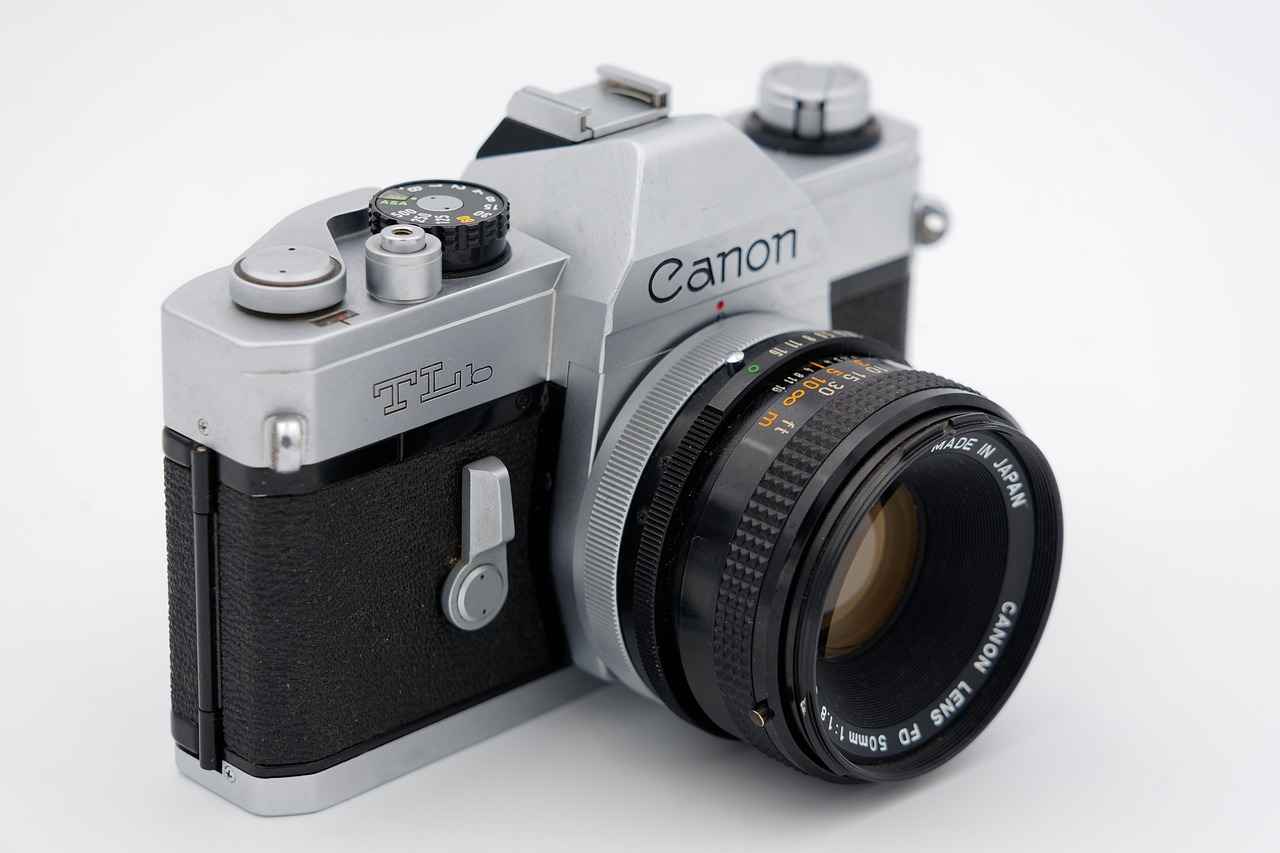
What Features Should You Look for in an Action Camera?
When it comes to purchasing an action camera, understanding the key features that enhance your experience is essential. With a plethora of options available, knowing what to look for can significantly impact your decision. Below are the crucial features you should consider when selecting the perfect action camera for your adventures.
- Resolution: The resolution of an action camera determines the clarity and detail of your footage. Most modern cameras offer at least 1080p (Full HD), while many high-end models provide 4K resolution or higher. A higher resolution is particularly beneficial for capturing stunning landscapes and fast-moving subjects.
- Frame Rate: Frame rate is equally important, as it affects how smooth your videos appear. Look for cameras that offer a variety of frame rates, such as 30fps, 60fps, or even 120fps for slow-motion effects. Higher frame rates are especially useful for action-packed activities like skiing or mountain biking, where every detail counts.
- Waterproof Capabilities: If you plan to use your action camera in extreme conditions, such as underwater or during heavy rain, ensure it has adequate waterproof ratings. Many action cameras are designed to withstand depths of up to 30 meters without the need for additional housing, making them perfect for snorkeling or surfing.
- Ease of Use: A user-friendly interface is essential, especially in fast-paced situations. Look for cameras with intuitive controls, touchscreen displays, and quick access to settings. Features like voice control can also enhance usability, allowing you to focus on your activity rather than fiddling with buttons.
- Stabilization Technology: To ensure smooth footage, especially during dynamic movements, consider cameras with built-in stabilization features. Optical or electronic image stabilization can significantly reduce the shakiness of your videos, resulting in a more professional-looking output.
- Battery Life: Battery longevity is crucial for extended adventures. Check the average battery life of the camera and consider purchasing additional batteries or a portable charger for longer outings. Some cameras also offer power-saving modes to extend usage time.
- Mounting Options: Versatility is key when it comes to action cameras. Ensure that the camera is compatible with a variety of mounts and accessories, such as chest straps, helmets, or drones. This flexibility allows you to capture unique angles and perspectives.
- Connectivity: Look for cameras with Wi-Fi or Bluetooth capabilities, enabling easy sharing of your footage to social media or cloud storage. Some cameras also offer companion apps for remote control and editing, enhancing your overall experience.
By considering these essential features, you can make an informed decision when selecting an action camera that meets your needs. Whether you’re a professional adventurer or an occasional thrill-seeker, the right camera can elevate your experiences and help you capture unforgettable moments.
Why is Image Quality Important?
When it comes to action cameras, image quality is not just a feature; it is a fundamental aspect that determines the overall performance and user experience. In this section, we will explore the importance of resolution and sensor size, two critical elements that contribute significantly to capturing stunning visuals.
Firstly, let’s discuss resolution. This term refers to the amount of detail an image holds, typically measured in pixels. Higher resolution translates to clearer and sharper images, which is essential for action-packed moments. For instance, a camera that captures 4K resolution (3840 x 2160 pixels) provides a much more detailed image compared to one that records in 1080p (1920 x 1080 pixels). This difference is particularly noticeable when viewing footage on larger screens or when cropping images for specific uses.
Moreover, higher resolution allows for greater flexibility in post-production. Whether you are editing a video for social media or creating a stunning montage of your adventures, having high-resolution footage gives you the ability to crop, zoom, and manipulate the image without sacrificing quality. This is crucial for content creators who want to present their work in the best possible light.
Next, we turn our attention to sensor size. The sensor is the component that captures light and converts it into an image. Generally, larger sensors can gather more light, which leads to better performance in low-light conditions. This is particularly important for action cameras, which are often used in various lighting environments, from bright sunny days to dimly lit indoor settings. A camera with a larger sensor can produce clearer images with less noise, resulting in better overall quality.
In addition, the size of the sensor affects the depth of field, which influences how much of the image is in focus at any given time. A camera with a larger sensor can create a more pronounced depth of field effect, allowing for a beautiful background blur that emphasizes the subject. This feature is particularly appealing for users who want to create cinematic footage.
Furthermore, the combination of high resolution and a large sensor can significantly enhance the dynamic range of the captured images. Dynamic range refers to the camera’s ability to capture details in both the brightest and darkest parts of an image. A greater dynamic range results in images that are more true to life, with vibrant colors and intricate details that make the visuals pop.
In summary, the significance of image quality in action cameras cannot be overstated. With higher resolution and larger sensors, users can expect to capture breathtaking visuals that do justice to their adventures. Whether you are a casual user or a professional content creator, understanding these aspects will help you make informed decisions when choosing the right action camera for your needs. Investing in a camera with superior image quality is essential for ensuring that your memories are preserved in the best way possible.
How Does Stabilization Impact Footage?
In the world of action cameras, stabilization technology plays a crucial role in ensuring high-quality video footage, particularly during fast-paced activities. Whether you’re skiing down a mountain, biking on rugged trails, or capturing thrilling moments while skydiving, the clarity and smoothness of your video can significantly impact the viewer’s experience. This article delves into the various stabilization methods employed by action cameras and their effects on video quality.
- Electronic Image Stabilization (EIS): This digital method uses software algorithms to reduce shake and jitter in videos. EIS is prevalent in many modern action cameras, offering users smoother footage without the need for additional hardware.
- Optical Image Stabilization (OIS): OIS involves physical adjustments to the camera’s lens or sensor to counteract movements. This method is typically found in higher-end models and can provide superior stabilization, especially in low-light conditions.
- Gimbal Stabilization: Gimbals are mechanical devices that use motors to keep the camera steady. They are often used by professional filmmakers for their ability to produce ultra-smooth footage, even during extreme movements.
The choice of stabilization method can greatly influence the overall quality of the footage captured. For instance, EIS is highly effective for most action scenarios but may introduce a slight crop to the image, which can reduce the field of view. Conversely, OIS maintains the original frame while effectively countering vibrations, making it ideal for capturing high-resolution videos without sacrificing the field of view.
Gimbal stabilization, while often more expensive and bulkier, provides the smoothest footage. It is particularly beneficial for cinematic shots where fluidity is essential. However, the added weight and complexity may not be suitable for all action camera users, especially those looking for lightweight options for extreme sports.
When engaging in high-energy activities, the inherent vibrations and movements can lead to shaky footage, making it difficult for viewers to appreciate the action. Effective stabilization ensures that the final video is not only visually appealing but also conveys the excitement of the moment without causing discomfort to the audience. Without proper stabilization, even the most breathtaking adventures can result in footage that is unwatchable.
When selecting an action camera, consider the following:
- Type of Activity: If you plan to use the camera for extreme sports, prioritize models with advanced stabilization features.
- Video Resolution: Higher resolutions can benefit from better stabilization, especially when cropping occurs.
- Weight and Portability: Determine whether you need a lightweight camera for easy transport or if you can handle a more robust setup.
In summary, stabilization technology is a vital aspect of action cameras that significantly impacts video quality. By understanding the different methods available and their effects, users can make informed decisions that enhance their filming experience. Whether you choose EIS, OIS, or a gimbal system, the right stabilization method will help you capture stunning, smooth footage that truly represents your adventures.
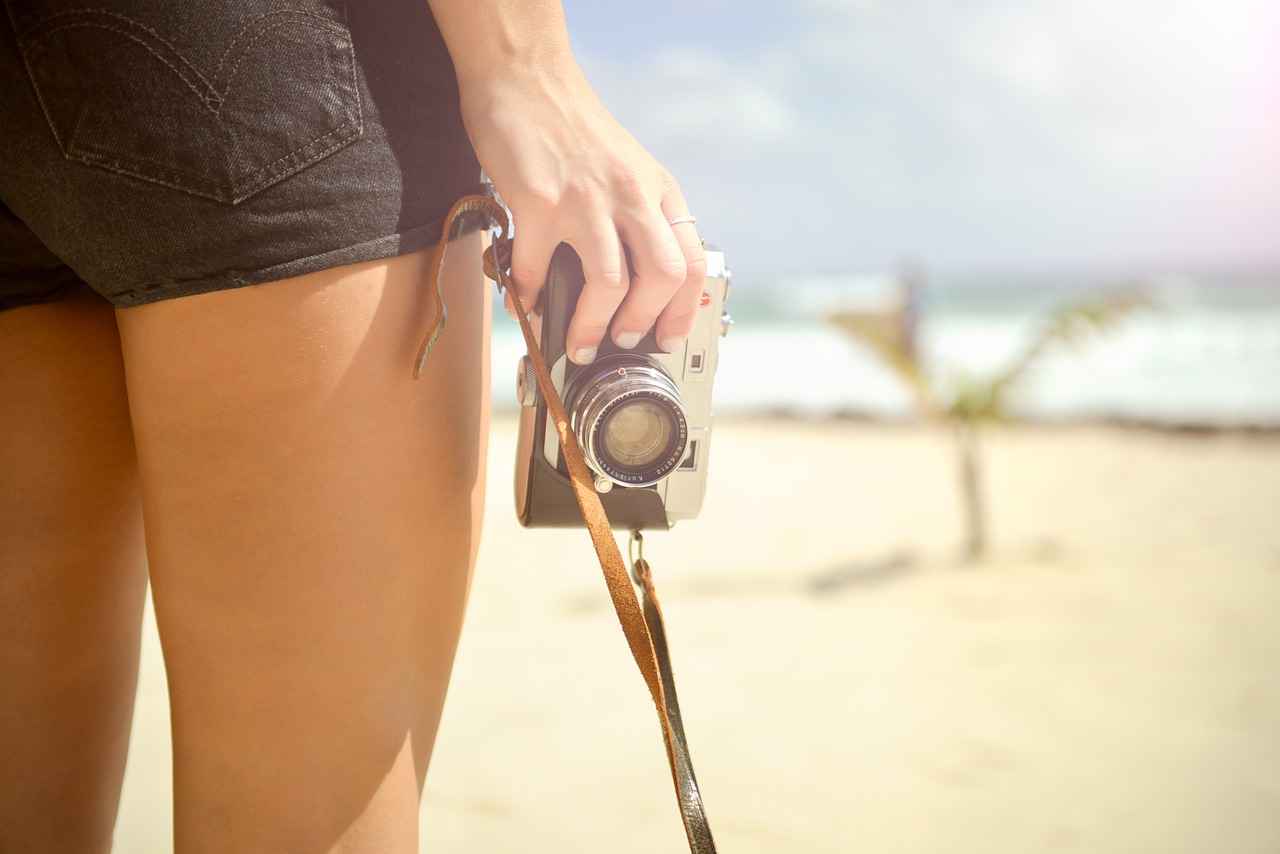
Which Brands Are Leading the Action Camera Market?
In the competitive landscape of action cameras, certain brands have emerged as front-runners, capturing significant market share and consumer loyalty. This section delves into the leading brands in the action camera industry, examining their unique market strategies and the features that set them apart from their competitors.
As of 2023, the action camera market is primarily dominated by a few key players, each with its own strengths and market strategies. The most notable brands include GoPro, DJI, and Insta360. Each of these companies has carved out a niche in the market, offering innovative products that cater to various consumer needs.
GoPro has long been synonymous with action cameras, thanks to its extensive range of features and robust build quality. The brand’s flagship models, such as the GoPro HERO10 Black, offer exceptional image quality, advanced stabilization technology, and a user-friendly interface. GoPro’s marketing strategy revolves around community engagement, encouraging users to share their adventures through social media, which significantly boosts brand loyalty.
DJI, primarily known for its drones, has made significant inroads into the action camera market with models like the DJI Osmo Action. This camera features dual screens and superior stabilization, appealing to vloggers and adventure enthusiasts alike. DJI’s strategy focuses on integrating cutting-edge technology, such as AI-driven features, which enhances the user experience and sets it apart from traditional action cameras.
Insta360 has gained traction in recent years by offering unique 360-degree cameras that allow users to capture immersive footage. Models like the Insta360 ONE X2 provide versatility that appeals to content creators looking for innovative ways to tell their stories. The brand’s emphasis on software capabilities, such as easy editing and sharing, enhances its appeal in a market that increasingly values user-friendly technology.
In addition to established players, several emerging brands are challenging the status quo by offering competitive pricing and unique features. Brands like Akaso and Campark have gained popularity among budget-conscious consumers by providing solid performance at lower price points. Their strategies often focus on value for money, appealing to a demographic that seeks quality without breaking the bank.
Innovation plays a crucial role in shaping consumer preferences in the action camera market. Brands that continuously evolve their products to incorporate the latest technology—such as improved image sensors, enhanced battery life, and advanced connectivity options—tend to attract more customers. Additionally, marketing strategies that emphasize user-generated content and community involvement further strengthen brand loyalty and influence purchasing decisions.
As technology advances, the action camera market is poised for even more innovation. Brands are expected to focus on integrating features like AI enhancements, improved battery efficiency, and cloud storage solutions to meet the demands of tech-savvy consumers. The competition will likely intensify, leading to more options for consumers and potentially better prices.
In conclusion, while brands like GoPro, DJI, and Insta360 currently lead the action camera market, the landscape is dynamic, with emerging brands challenging traditional players. Understanding the strengths and strategies of these brands will help consumers make informed choices when selecting their next action camera.
What Makes GoPro a Market Leader?
GoPro has become synonymous with action cameras, a testament to its innovative spirit and commitment to quality. Founded in 2002, the brand has continually pushed the boundaries of technology, making it a favorite among adventure enthusiasts and content creators alike. But what exactly makes GoPro a market leader in the action camera industry?
One of the primary reasons for GoPro’s enduring popularity is its cutting-edge technology. The latest models, such as the GoPro HERO10 Black, boast features like:
- HyperSmooth 4.0 stabilization for incredibly smooth footage
- 5.3K video resolution that captures stunning detail
- TimeWarp 3.0 for creative time-lapse videos
- Waterproof design up to 33 feet without additional housing
These features not only enhance the user experience but also allow for versatile shooting options, catering to a wide range of activities from surfing to skydiving.
GoPro has fostered a vibrant community of users who actively share their experiences and footage online. This community-driven approach has led to valuable feedback that informs product development. GoPro listens to its users, continuously refining its products based on real-world usage and suggestions. This commitment to customer satisfaction helps maintain brand loyalty and attracts new users.
GoPro’s marketing strategies have also played a significant role in its success. The brand effectively utilizes social media platforms to showcase user-generated content, creating a strong sense of community and engagement. Additionally, GoPro’s branding emphasizes adventure and exploration, resonating with consumers who seek to capture their experiences. The tagline “Be a Hero” exemplifies this ethos, encouraging users to document their adventures.
Another factor contributing to GoPro’s market leadership is its commitment to innovation. Each new model introduces enhancements that keep pace with technological advancements and consumer expectations. For instance, the integration of voice control and live streaming capabilities in recent models reflects the brand’s adaptability to changing trends and user needs.
While GoPro cameras are often seen as premium products, the value they offer justifies their price points. The brand provides a range of models, from entry-level options to high-end variants, ensuring there is something for everyone. This pricing strategy allows GoPro to capture a broad audience, from casual users to professional filmmakers.
GoPro has also established strategic partnerships with various brands and platforms, enhancing its visibility and reach. Collaborations with adventure sports brands and sponsorship of extreme sports events help reinforce its image as the go-to action camera. These partnerships not only increase brand exposure but also attract new customers who are passionate about those activities.
In summary, GoPro’s status as a market leader in action cameras can be attributed to its innovative technology, strong community engagement, effective marketing strategies, continuous product evolution, competitive pricing, and strategic partnerships. These factors combine to create a brand that resonates deeply with consumers, solidifying GoPro’s position at the forefront of the action camera industry.
How Are Emerging Brands Challenging Established Players?
The action camera market has been traditionally dominated by a few well-known brands, but in recent years, a wave of emerging brands has begun to challenge these established players. With innovative features, competitive pricing, and a focus on niche markets, these newcomers are making their mark and reshaping consumer choices.
What Strategies Are New Brands Using?
Emerging brands are employing a variety of strategies to carve out their niche in the action camera market. One of the most effective approaches is leveraging cutting-edge technology at a lower price point. For instance, brands like DJI and Insta360 have introduced models that offer features like 4K video resolution and advanced stabilization, often at prices significantly lower than those of established competitors like GoPro.
Are Niche Markets Being Targeted?
Many new brands are focusing on specific user demographics or activities, such as extreme sports, underwater photography, or vlogging. By catering to the unique needs of these groups, they can build a loyal customer base. For example, Akaso has targeted the budget-conscious adventurer market with affordable options that do not compromise on essential features like waterproofing and image quality.
How Are Reviews and User Feedback Influencing Brand Success?
User reviews play a crucial role in the success of emerging brands. With the rise of social media and online platforms, customers can easily share their experiences and provide feedback. This transparency allows new brands to quickly adapt and improve their products based on real-world usage. Brands that actively engage with their customers and address concerns tend to build stronger reputations and gain market traction.
What Role Does Marketing Play?
Marketing strategies have also evolved, with many emerging brands utilizing influencer partnerships and social media campaigns to reach potential customers. By showcasing their products in action through engaging content, they can effectively demonstrate their capabilities and attract a following. This approach not only builds brand awareness but also fosters a community of users who share a passion for adventure and exploration.
How Do Pricing Strategies Affect Consumer Choices?
Pricing is a critical factor in the decision-making process for consumers. Emerging brands often adopt a value-driven approach, providing high-quality features at a fraction of the cost of established brands. This pricing strategy appeals to budget-conscious consumers who are looking for reliable products without breaking the bank. In turn, this forces established brands to reconsider their pricing structures and value propositions.
What Innovations Are Emerging Brands Bringing to the Market?
Innovation is at the heart of many new brands’ success. Whether it’s through enhanced battery life, improved image stabilization, or unique accessories, these companies are pushing the boundaries of what action cameras can do. For example, brands like GoPro have historically led in innovation, but new players are quickly catching up by introducing features that resonate with modern consumers, such as connectivity options and user-friendly interfaces.
In conclusion, the action camera market is experiencing a significant transformation as emerging brands challenge established players. By focusing on competitive features, targeting niche markets, and leveraging effective marketing strategies, these new entrants are not only gaining market share but are also pushing the industry forward. As consumers become more discerning, the landscape will continue to evolve, making it an exciting time for action camera enthusiasts.

What Are the Price Ranges for Top Action Cameras?
When it comes to choosing an action camera, understanding the price spectrum is crucial for making an informed decision. The market offers a wide variety of options, each catering to different budgets and needs. This section will break down the price ranges for top action cameras and what consumers can expect at each level.
The price of action cameras can vary significantly, typically falling into three main categories: budget, mid-range, and premium. Each category offers unique features and capabilities that appeal to different types of users.
| Price Range | Typical Features | Best Uses |
|---|---|---|
| Under $300 | Basic video quality, limited stabilization, lower resolution | Casual use, family events, light outdoor activities |
| $300 – $500 | Improved image quality, better stabilization, additional features like waterproofing | Travel, sports, vlogging |
| Above $500 | High-end features, 4K/8K video, advanced stabilization, extensive accessories | Professional use, extreme sports, filmmaking |
In the budget category, action cameras priced under $300 can still deliver decent performance. These cameras often come with basic functionalities and are suitable for casual users. Here are some notable options:
- Camera A: Offers 1080p video, basic waterproofing, and is perfect for family outings.
- Camera B: Known for its compact size and user-friendly interface, ideal for beginners.
- Camera C: Features a decent battery life and is suitable for light outdoor activities.
For those willing to invest more, the premium action cameras above $500 come packed with advanced features. These models are designed for serious enthusiasts and professionals who demand the best. Here’s what you can expect:
- Camera D: Provides stunning 4K video at 60fps, exceptional stabilization, and various shooting modes.
- Camera E: Known for its rugged design and extensive accessory options, perfect for extreme sports.
- Camera F: Offers innovative features like live streaming capabilities and voice control.
Investing in a premium model often means you are equipped with the latest technology, ensuring high-quality footage and enhanced user experience.
Choosing the right price range for an action camera depends on your specific needs and usage scenarios. Consider the following:
- Budget: Determine how much you are willing to spend without compromising essential features.
- Usage: Identify the primary activities you will use the camera for, whether it’s casual family events or professional filming.
- Features: Assess which features are non-negotiable for you, such as image quality, stabilization, and waterproof capabilities.
By understanding the price spectrum and evaluating your personal requirements, you can make a more informed decision when purchasing an action camera.
What Can You Get Under $300?
When it comes to action cameras, many enthusiasts often assume that high-quality options come with a hefty price tag. However, budget-friendly options can still deliver impressive features without breaking the bank. In this section, we explore the best action cameras available for under $300 and what capabilities they offer to users.
Choosing an action camera within this price range allows you to capture stunning footage without compromising on essential features. Many models under $300 provide excellent image quality, decent stabilization, and user-friendly interfaces, making them ideal for both casual users and adventurous spirits.
- Akaso Brave 7 LE – This camera features 4K video recording, dual screens for easy framing, and is waterproof up to 33 feet. Its built-in stabilization technology ensures smooth footage, making it a great choice for outdoor activities.
- GoPro HERO 7 White – While it’s an older model, the HERO 7 White still offers 1440p video resolution and excellent voice control features. Its rugged design and waterproof capabilities make it a reliable companion for any adventure.
- Yi 4K Action Camera – Known for its impressive image quality and 4K recording at 30fps, the Yi 4K also boasts a touchscreen interface, making it user-friendly. Its compact size and lightweight design are perfect for travel.
When selecting an action camera under $300, consider the following features:
- Video Resolution: Look for cameras that support at least 1080p or higher for clear and vibrant videos.
- Stabilization: This feature is crucial for smooth footage, especially during high-action shots.
- Battery Life: A good action camera should have a battery that lasts at least 1.5 to 2 hours during recording.
- Waterproofing: If you plan to use your camera in wet conditions, ensure it has a sufficient waterproof rating.
Many budget action cameras perform admirably in real-world scenarios. Users report that models like the Akaso Brave 7 LE and Yi 4K offer excellent performance in various lighting conditions, capturing vibrant colors and details. Additionally, the stabilization features in these cameras significantly reduce shaky footage, making action shots look professional.
Reviews from users highlight the value for money that these cameras provide. Many users appreciate the affordable price combined with features typically found in more expensive models. Common praise includes ease of use, versatility, and the ability to capture high-quality footage without the need for extensive technical knowledge.
In summary, action cameras under $300 can be an excellent investment for those looking to document their adventures. With a variety of options available, consumers can find models that suit their needs without compromising on quality or features.
What Are the Premium Options Above $500?
When it comes to capturing breathtaking moments in high definition, premium action cameras stand out as the top choice for enthusiasts and professionals alike. With price tags exceeding $500, these devices often come equipped with advanced features that justify their investment. In this section, we will explore what makes these high-end models superior and the unique attributes that cater to serious adventurers.
Premium action cameras are not just about higher prices; they offer a range of cutting-edge features that enhance user experience and output quality. Here are some of the key features that set them apart:
- Superior Image Quality: Most premium models boast higher resolution capabilities, often reaching 4K or even 6K. This allows for stunning visuals that capture every detail, making them ideal for professional use.
- Advanced Stabilization: Technologies such as HyperSmooth or gimbal-like stabilization ensure that footage remains smooth, even during the most intense activities.
- Robust Build Quality: Premium cameras are often designed to withstand harsh conditions, featuring waterproof and shockproof casings that ensure durability in extreme environments.
- Extended Battery Life: Higher-end models typically come with improved battery performance, allowing for longer shooting times without the need for frequent recharges.
- Enhanced Connectivity: Features like built-in Wi-Fi and Bluetooth allow for easy sharing and remote control, making it convenient for users to manage their footage on the go.
Several premium action cameras have made a name for themselves in the market. Below is a table comparing some of the top models available:
| Camera Model | Resolution | Stabilization | Price |
|---|---|---|---|
| GoPro HERO11 Black | 5.3K | HyperSmooth 5.0 | $499 |
| DJI Osmo Action 3 | 4K | RockSteady 3.0 | $329 |
| Insta360 ONE R | 5.7K | FlowState Stabilization | $549 |
| Sony FDR-X3000 | 4K | B.O.SS (Balanced Optical SteadyShot) | $398 |
Each of these models comes with its own set of features that cater to different filming needs. For instance, the GoPro HERO11 Black is well-known for its versatility and rugged design, making it a favorite among outdoor enthusiasts. On the other hand, the Insta360 ONE R excels in providing unique 360-degree filming capabilities, appealing to those looking to capture immersive content.
Investing in a premium action camera not only elevates the quality of your footage but also enhances your overall filming experience. With features like live streaming capabilities and customizable settings, users can tailor their shooting experience to match their specific needs. Moreover, many premium models offer extensive app support, allowing for easy editing and sharing directly from your mobile device.
In summary, while premium action cameras come with a higher price point, they deliver features and performance that can significantly enhance your filming experience. Whether you are a professional filmmaker or an adventure seeker, these cameras provide the tools needed to capture stunning visuals and unforgettable moments.
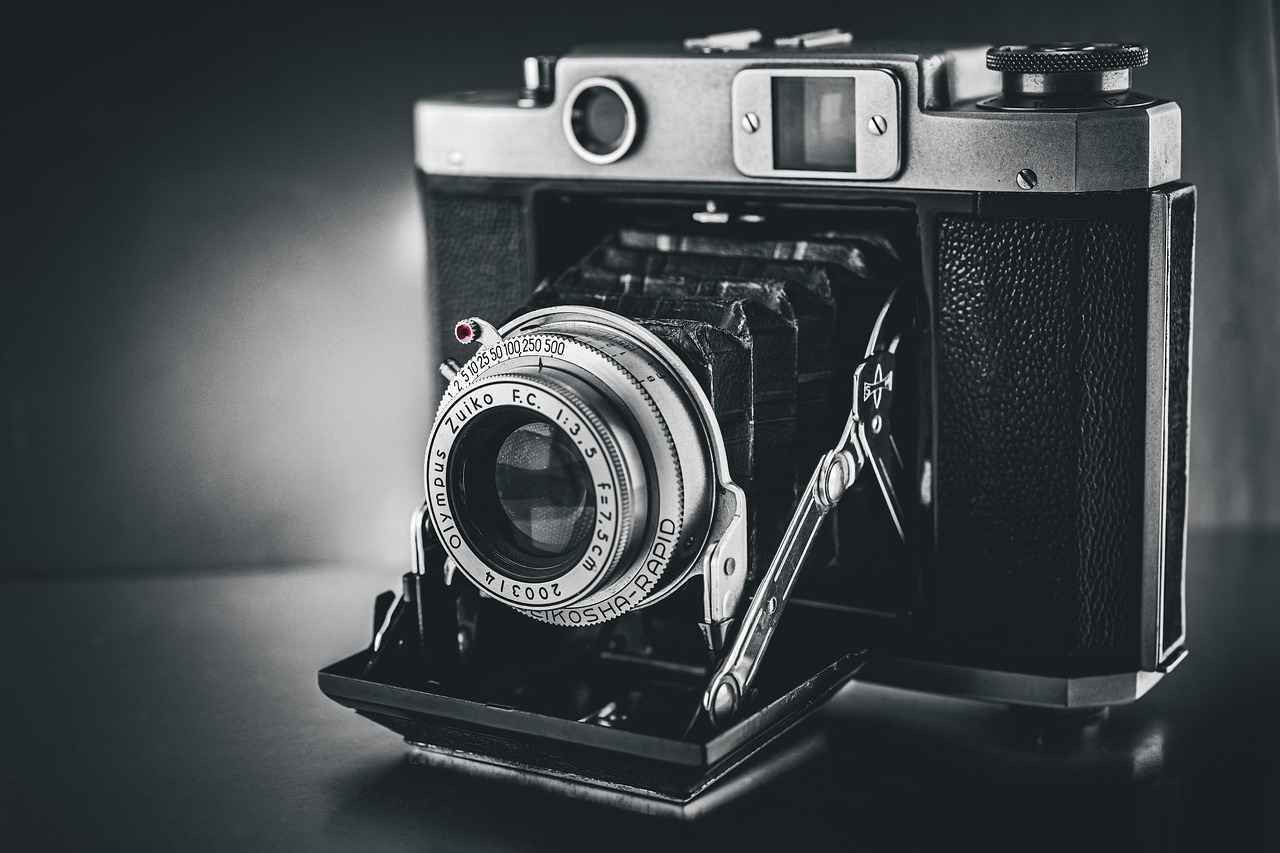
How to Choose the Right Action Camera for Your Needs?
When it comes to selecting the perfect action camera, understanding your personal needs and specific use cases is essential. With a plethora of options available on the market, making an informed choice can be overwhelming. This guide aims to simplify the process by highlighting key factors to consider based on your lifestyle and intended activities.
First and foremost, identify how you plan to use your action camera. Whether it’s for extreme sports, casual travel, or underwater adventures, different cameras cater to varying needs. For instance:
- Adventure Sports: If you’re into skiing, mountain biking, or surfing, prioritize durability and stabilization features.
- Travel Vlogging: For capturing scenic views and storytelling, look for high resolution and good low-light performance.
- Underwater Photography: Ensure the camera is waterproof and has a wide-angle lens for capturing expansive underwater scenes.
Next, evaluate the features that matter most to you. Here are some critical specifications to keep in mind:
| Feature | Importance |
|---|---|
| Resolution | Higher resolution provides clearer images and videos. |
| Frame Rate | Higher frame rates are essential for smooth motion, especially in action shots. |
| Stabilization | Essential for reducing shakiness during fast movements. |
| Battery Life | A longer battery life ensures you can capture more footage without frequent recharges. |
| Waterproof Capabilities | Important for underwater activities or inclement weather. |
Budget is a significant factor in your decision-making process. Action cameras range from affordable options under $300 to high-end models exceeding $500. Determine your budget and what features you can compromise on:
- Under $300: Look for entry-level cameras that offer decent quality and essential features.
- $300 – $500: Mid-range options typically include better stabilization, higher resolution, and additional accessories.
- Above $500: Premium models provide advanced features, exceptional durability, and superior image quality.
Lastly, consider the brand’s reputation and user reviews. Established brands like GoPro and DJI often lead the market due to their reliability and innovation. Reading user reviews can provide insights into the camera’s performance and any common issues users face.
In summary, choosing the right action camera involves a thorough understanding of your needs, evaluating essential features, considering your budget, and researching brand reputations. By taking these factors into account, you can select an action camera that will enhance your adventures and capture stunning moments.
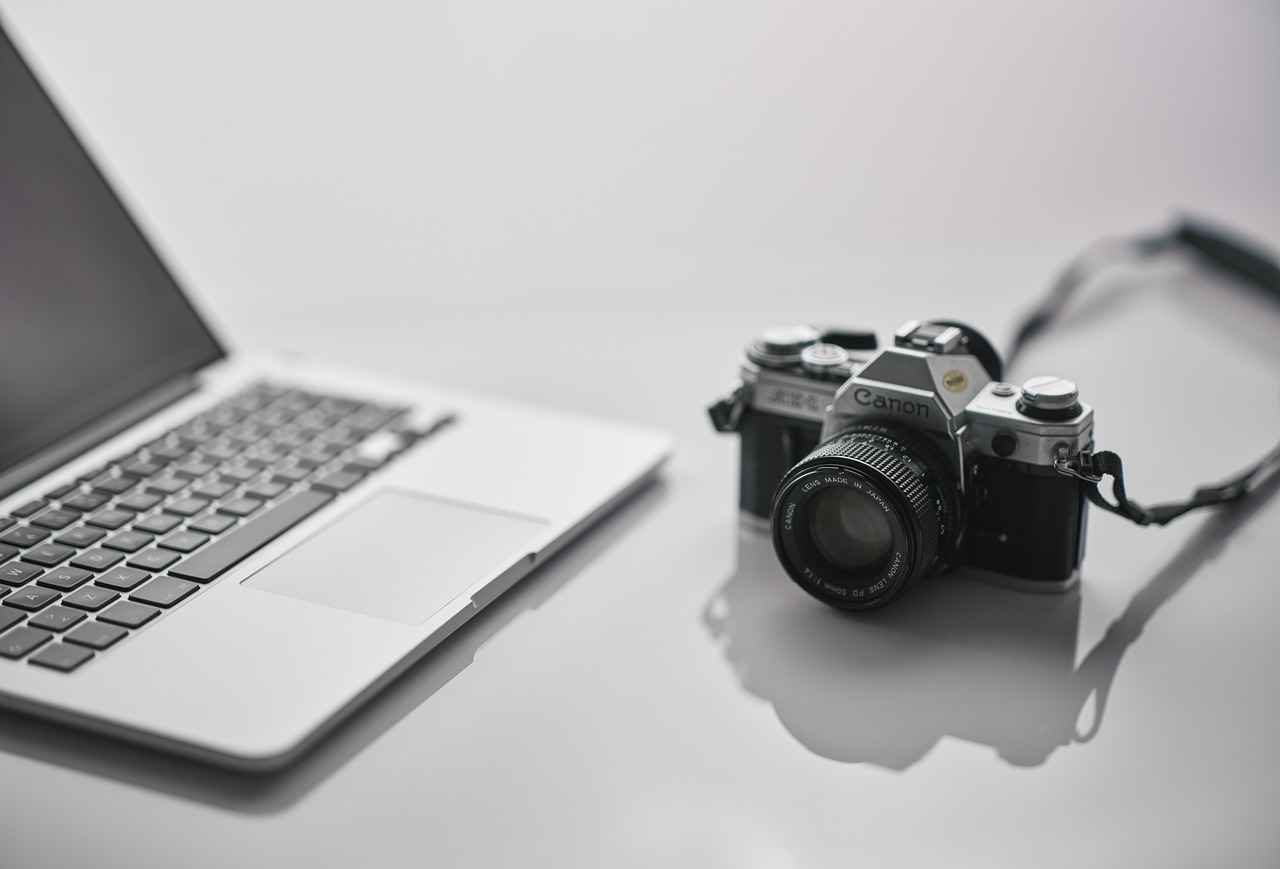
What Are the Trends Shaping the Future of Action Cameras?
The action camera industry is undergoing a significant transformation, driven by technological advancements and changing consumer preferences. As outdoor enthusiasts, vloggers, and content creators seek to capture their experiences in innovative ways, several key trends are emerging. This article delves into the trends that are shaping the future of action cameras, focusing on 360-degree filming and AI integration, among others.
360-degree filming allows users to capture immersive video footage that encompasses the entire environment around them. This technology is becoming increasingly popular due to the rise of virtual reality (VR) and augmented reality (AR) applications. With the ability to create engaging and interactive content, 360-degree cameras are appealing to both consumers and businesses. Users can relive their adventures in a more engaging way, making it perfect for travel vlogs, extreme sports, and live events.
Artificial Intelligence (AI) is revolutionizing the way action cameras operate. Many new models now feature AI-driven functionalities that enhance user experience. For example, AI can assist in automatic scene detection, optimizing settings based on the environment, and even providing real-time editing suggestions. This integration not only simplifies the filming process but also ensures that users capture the best possible footage without needing extensive technical knowledge.
One of the most critical features in action cameras is image stabilization. As users engage in high-energy activities, such as mountain biking or surfing, stabilization technology helps create smooth and professional-looking footage. Recent advancements in stabilization, such as gimbal technology and electronic image stabilization (EIS), have significantly improved the quality of videos, making them more visually appealing and easier to watch.
As adventure seekers push their limits, the demand for waterproof action cameras remains strong. Users want to capture their experiences underwater, whether they are snorkeling, surfing, or simply enjoying a rainy day. Modern action cameras are designed to withstand harsh conditions, with waterproof ratings often exceeding depths of 30 meters. This durability ensures that users can confidently take their cameras anywhere, enhancing their filming experience.
Portability is a significant factor for action camera users. The trend towards compact and lightweight designs allows for easier handling and transportation. Many users prefer cameras that can easily fit in their pockets or attach to gear without adding extra weight. This trend not only caters to the needs of adventurers but also appeals to content creators who require flexibility in their filming setups.
The rise of social media platforms has a profound impact on the features that action cameras offer. Users are increasingly looking for cameras that can easily connect to their smartphones for quick sharing and live streaming. Features like Wi-Fi connectivity and mobile app integration allow for seamless content sharing, making it easier for users to engage with their audience in real-time.
As technology continues to evolve, the future of action cameras looks promising. With advancements in sensor technology, battery life, and even cloud storage solutions, users can expect even more innovative features. The integration of AI and 360-degree capabilities will likely become standard in future models, enhancing the overall user experience and making action cameras an essential tool for capturing life’s adventures.

What Do Users Say About Their Favorite Action Cameras?
Consumer reviews provide invaluable insights into the performance and reliability of action cameras. Users often share their experiences in various aspects, including ease of use, image quality, and durability. This section summarizes the feedback from users, highlighting the most praised features and common issues encountered.
One of the most frequently mentioned aspects in reviews is image quality. Many users rave about how certain models capture stunning visuals, even in challenging conditions. For instance, cameras that offer 4K resolution and superior low-light performance tend to receive high marks. Users appreciate the vivid colors and sharp details that these cameras can deliver, making their adventure footage look professional.
Another critical feature that users often discuss is stabilization technology. Reviewers frequently note how effective stabilization systems can turn shaky footage into smooth, cinematic clips. Users engaged in high-speed activities, such as biking or skiing, particularly emphasize the importance of this feature. They report that models with advanced stabilization capabilities allow them to capture their adventures without compromising video quality.
Durability is also a recurring theme in consumer feedback. Action cameras are designed for rugged use, and users expect them to withstand harsh conditions. Reviews often highlight models that excel in waterproofing and shock resistance. Many users appreciate the peace of mind that comes with knowing their camera can handle drops or splashes, which is essential for outdoor enthusiasts.
Battery life is another area where users express their opinions. Many reviewers share their experiences regarding how long their cameras last during extended outings. Some models receive praise for their long-lasting batteries, while others are criticized for requiring frequent recharges. Users often recommend carrying extra batteries or portable chargers to ensure they don’t miss capturing crucial moments.
Moreover, the user interface and ease of use are significant factors influencing consumer satisfaction. Users appreciate intuitive menus and touchscreen functionality, which make navigating settings quick and easy. Many reviews suggest that action cameras with straightforward controls allow users to focus more on their activities rather than fumbling with complex settings.
Despite the many positive reviews, consumers also highlight common issues. Some users report challenges with connectivity features, such as Wi-Fi or Bluetooth, which can be inconsistent. Others mention difficulties with software updates or app compatibility. These issues can detract from the overall user experience, leading to frustration.
In summary, consumer reviews reveal that action cameras are judged on various criteria, including image quality, stabilization, durability, battery life, and ease of use. While many users celebrate the impressive features of their favorite models, they also provide valuable feedback on areas for improvement. This user-generated content serves as a guide for potential buyers, helping them make informed decisions when selecting an action camera that meets their needs.
Frequently Asked Questions
- What is the best action camera for beginners?
If you’re just starting out, the GoPro HERO9 is a fantastic choice. It’s user-friendly, durable, and offers great image quality without overwhelming features. Plus, it has excellent stabilization to help you capture smooth footage!
- How much should I spend on an action camera?
It really depends on your needs! You can find decent options under $300 that provide solid performance. However, if you’re looking for advanced features, expect to invest over $500 for high-end models that deliver exceptional quality.
- Are action cameras waterproof?
Many modern action cameras, like the DJI Osmo Action, are designed to be waterproof right out of the box. However, it’s always wise to check the specifications and consider purchasing a protective housing if you plan to dive deep!
- What features should I prioritize in an action camera?
Look for features like resolution, frame rate, and stabilization. If you’re into extreme sports, a camera with excellent stabilization will make your footage look professional, even during wild rides!
- How does battery life affect my choice?
Battery life is crucial, especially for long adventures. Cameras with longer battery life, like the GoPro HERO10, allow you to capture more without worrying about recharging. Always check reviews on battery performance before buying!
